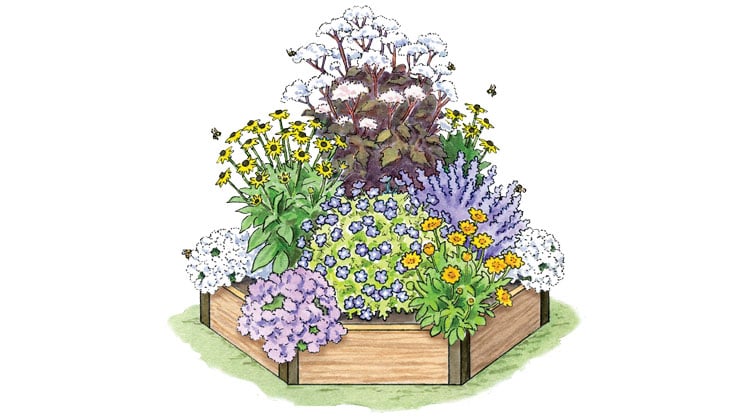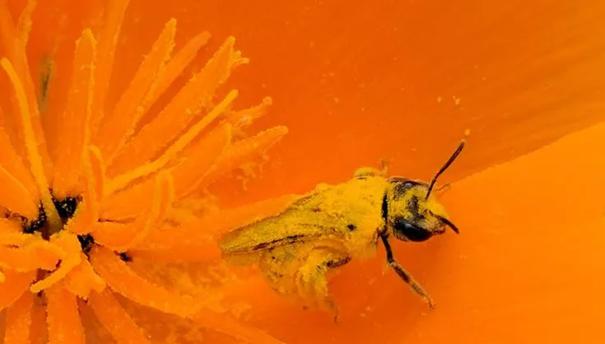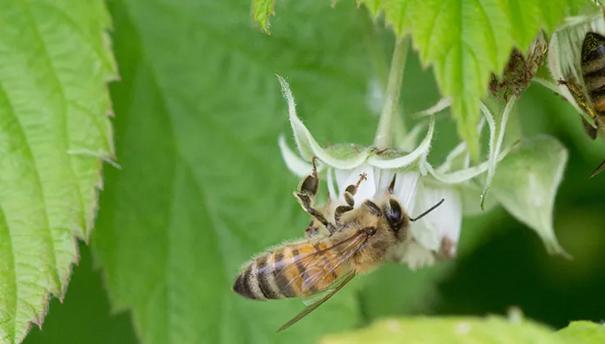Beekeeping: A Hobby With Sweet Rewards
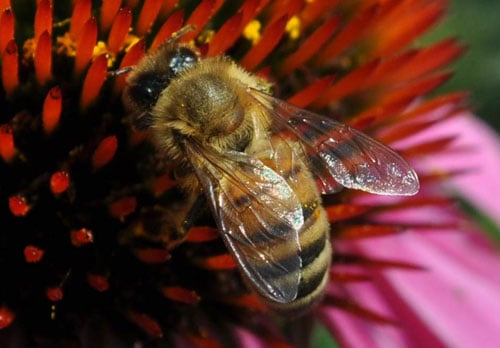 A honeybee pollinates a purple coneflower (Echinacea purpurea) Photo: Suzanne DeJohn
A honeybee pollinates a purple coneflower (Echinacea purpurea) Photo: Suzanne DeJohnIn This Article
Is beekeeping right for you? Here are things to keep in mind as you consider whether to get your own bee hives. Jump to these topics.
I clearly remember the first scary time I stuck my hand into the screened cage holding my first hive of 10,000 honeybees. Like most people, my reflexive response is to give bees and other summer stingers a wide berth. Up until that moment, beekeeping was just a concept. Now, I had my bees and, if I was going to give it a go, I had to reach into the cage (with a gloved hand) to remove the queen. This was my real introduction to beekeeping.
Beekeeping and gardening go naturally together. Squash, cucumbers, apples, melons and strawberries are just a handful of the many crops that rely on bee pollination. And then there's the honey. A single, healthy hive can yield 50 to 100 pounds of this sweet, golden elixir.
I'm proud to say that my first "bee installation" went smoothly. I kept beehives and harvested honey in Vermont for several years before moving to another state and putting the hobby on hold. As I consider starting up again a dozen years later, I realize that, while the practice of keeping honeybees has been around for millennia, a lot has changed in the last decade.
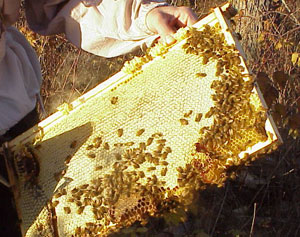 Bees on a frame
Bees on a frameBeekeeping Today
Beekeeping is suddenly a hot topic — perhaps due to the increasing popularity of homesteading and raising one's own food, or a reaction to the worldwide plight of pollinators, or the desire to connect more closely with the natural world. Local beekeeping clubs and online forums are flourishing, and classes fill up quickly. These are all good signs, because although raising bees is a fascinating, fun and rewarding hobby, it also requires planning, knowledge and a modest investment of time and money to be successful.
One of the biggest challenges for beekeepers in the last decade is the steep rise in the incidence of colony collapse disorder, especially among commercial hives. The winter of 2012-13 was particularly difficult; some beekeepers lost up to half their hives to this disorder, the causes of which are still not fully understood. (More on that later.) It's important that prospective beekeepers go into the hobby with their eyes open to the challenges and seek the help of experienced mentors.
The best way to get started is to take a class or contact a local beekeeping group where mentors will let you watch as they work their own hives. You can read books and blogs to learn as much as you can about their habits, which will affect how you manage your hive. But, beekeeping techniques vary with region, climate and weather — I can't stress enough that new beekeepers benefit from having someone nearby to consult. By exploring the ins and outs of your new hobby in summer, you'll have time to gear up and order your bees for installing next spring.
Is Beekeeping Right for You?
Here are things to keep in mind as you consider whether to get your own bee hives.
Are there local regulations?
Town restrictions may include siting the hives a specified distance from lot lines. Housing associations and covenants may prohibit hives. Many state departments of agriculture require hobby beekeepers to register their hives, and they may require periodic inspections by the state bee specialist to help them track pest and disease outbreaks and, hopefully, limit their spread.
How will your neighbors react?
Many people are afraid of honeybees, and lump them together with much more aggressive wasps and yellow jackets. Part of keeping bees is educating people on their importance, habits and instincts. If you have nearby neighbors, be considerate of their fears and inquire if anyone has a true bee allergy.
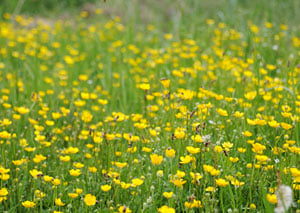 Bees at work in an urban meadow
Bees at work in an urban meadowDo you have a suitable spot?
Because bees will fly a mile or more in search of nectar, all but the most urban areas likely have enough nectar sources. More important is keeping human-bee interactions to a minimum. Most of the time, bees go peacefully about their business and are unlikely to sting unless provoked. Unlike wasps, which can sting multiple times, a honeybee can only sting once, and the process kills it. Stinging is suicide for a bee. What provokes honeybees to sting? Swatting at them, as well as vibration and exhaust from traffic and power equipment. Facing the hive away from pedestrian traffic and erecting a fence to force bees into an upward flight path helps keep them out of trouble.
Are you willing to commit the time?
Compared to many hobbies, beekeeping requires minimal time commitment. Many beekeepers visit their hives weekly, checking on the health of the queen (based on her egg-laying habits) and troubleshooting for mites and diseases. More time-consuming is educating yourself about bees, so you'll learn to recognize problems and anticipate maintenance activities.
Do you have the physical strength?
A honey-filled box (using traditional frame hives) can weigh 50 pounds or more.
Consider the up-front cost.
It will run you about $250 for the essentials, including a starter box with frames and wax foundation (called the "hive body"), a bee veil (to protect your head), gloves, hive tool, bee brush and smoker. Most beekeepers start with "package bees" which includes a 3 lb. box containing about 10,000 bees and a mated queen. A package costs about $120. Within a month or so of installing bees, you'll need to add additional boxes usually one more hive body and one or two shallower boxes for honey, called supers (see note, below). These supplies are one-time costs, assuming the bees thrive and don't need to be replaced. If you hope to harvest the maximum amount of honey, you'll want to look into getting (or borrowing) a honey extractor.
Note: The traditional hive configuration consists of a series of boxes filled with frames and wax foundation, sometimes called the Langstroth movable frame hive. Because it's so common, it's a good choice for beginning beekeepers that want to work with a mentor. An alternative to this system, call the top-bar hive, is becoming more popular with hobby beekeepers around the world. The initial cost is lower, but overall honey production is usually lower, too. Top-bar hives are especially popular with people who are keeping bees to provide pollination for plants, as well as those who don't want to deal with heavy honey supers. Because you generally harvest both the comb and honey, you don't need special extracting equipment.
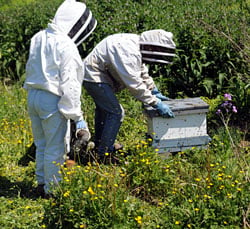 Checking a Langstroth-style hive
Checking a Langstroth-style hiveYes, you will get stung occasionally.
Wearing protective gear and using your smoker properly (which helps calm the bees) will minimize the risk of stings. Learning to move slowly and deliberately around the hive, as well as opening hives only on warm, sunny days when the maximum number of worker bees are out foraging helps reduce the likelihood of stings, too. But all beekeepers get stung occasionally. And some beekeepers believe that after several stings your reaction (initial sharp pain, itching and swelling around the sting site) begins to diminish. If anyone ever shows signs of a generalized reaction (away from the sting site), including rapid swelling around the eyes or lips, difficulty breathing, or nausea, these can be signs of a life-threatening bee allergy. Keep an EpiPen with your bee tools and don't hesitate to call 911.
How will you manage pests?
Problems with colony collapse disorder (CCD) and how it's affecting commercial beekeeping is making headlines. However, even prior to the rise of CCD around 2005, there were plenty of potential threats to backyard beehives. Varroa and tracheal mites, as well as nosema, chalkbrood and foulbrood diseases, can affect backyard as well as commercial hives. You'll want to learn the signs and symptoms so you can catch problems early. Some hobby beekeepers feel that if they leave their bees alone, the insects will somehow deal with these problems. Unfortunately, mites and diseases often cause serious and sometimes deadly consequences for hives. Take time to research your treatment options ahead of time, especially if you are hoping to raise your bees using organic pest controls.
Keeping bees is a rewarding hobby. Honeybees have interesting habits and complex societies and tending them can be a calming and peaceful experience. And in the end, there's the honey.
Last updated: 03/13/2024
Print this Article:
Related Articles
Get the Dirt
Stay up to date on new articles and advice. Please fill out the information below.


